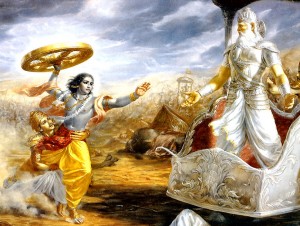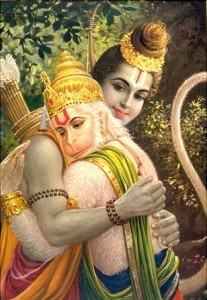Introduction
The five bhavas (“moods” or “feelings”) are different attitudes a devotee may adopt when relating to the Divine. They reflect the richness and diversity of human relationships, such as those of friends, lovers, or mother-child. Each bhava offers something different for everyone.
The bhavas belong to the path of Bhakti Yoga, the yoga of devotion. In bhakti yoga, human emotions are gradually elevated and purified by concentration on the Divine which is seen as the embodiment of all that is sacred, pure and beautiful.
Shanta Bhava – Peaceful Attitude
- A bhakta (devotee) in shanta bhava cultivates a peaceful state of mind, seeing and experiencing God as supreme peace (shanti). A shanta bhakta will generally tend to be rather quiet and unobtrusive in expressing his or her devotion.
- Bhisma, a character of the Mahabharata, is regarded as a good example of a shanta bhakta.
Dasya Bhava – Servant Attitude
- A devotee in dasya bhava sees himself as a servant of God and visualizes God as the all-powerful, all-knowing and omnipresent master of creation. A dasya bhakta will feel very humble, meek and insignificant in the face of the power and grace of God.
- Dasya bhava is the attitude which is probably the most common in the major monotheistic religions of the world such as Islam, Judaism and Christianity, where God is called Lord, Almighty and All-Merciful.
- A famous dasya bhakta of Hindu mythology is the monkey-god Hanuman, who loved Sri Rama with the attitude of a humble servant.
Sakhya Bhava – Friendship
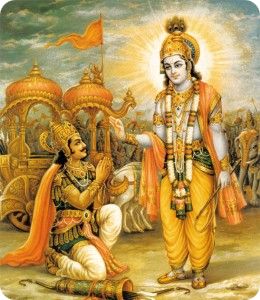 A sakhya bhakta addresses God as one’s best and most intimate friend. In this attitude, the devotee is almost on equal terms with the Divine. It is therefore a more intimate relationship than that of a servant, where God may be both loved and feared. Sakhya bhava springs from the realization that God is one’s best and most intimate friend.
A sakhya bhakta addresses God as one’s best and most intimate friend. In this attitude, the devotee is almost on equal terms with the Divine. It is therefore a more intimate relationship than that of a servant, where God may be both loved and feared. Sakhya bhava springs from the realization that God is one’s best and most intimate friend.- The Indian spiritual tradition allows the devotee to have such an intimate relationship with God, without any feelings of this being disrespectful or sacrilegious.
- Arjuna’s relationship towards Krishna as prescribed in the Mahabharata is regarded as an excellent example for this bhava. Arjuna used to sit, eat, walk, talk with and embrace Krishna as an intimate friend. The drawback was that Arjuna tended to forget Krishna’s real glory and power and wasn’t aware of Krishna’s reality as the supreme self until Krishna revealed his universal form to him.
Vatsalya Bhava – Motherly Love
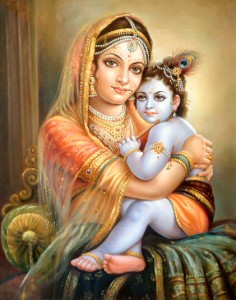 The vatsalya bhakta has a mother-child relationship towards the Divine, cultivating feelings of motherly love and affection towards one’s chosen form of God. Vatsalya bhava may come naturally for women with strong motherly feelings. In this bhava, there is absolutely no fear of God.
The vatsalya bhakta has a mother-child relationship towards the Divine, cultivating feelings of motherly love and affection towards one’s chosen form of God. Vatsalya bhava may come naturally for women with strong motherly feelings. In this bhava, there is absolutely no fear of God.- This bhava is usually associated with Yasoda, the foster mother of Krishna who loved Krishna as her own child. Despite experiencing numerous instances of Krishna’s divine power, Yasoda couldn’t help but feel that Krishna was hers, her sweet child rather than a divine embodiment to be seen with awe and reverence.
Madhurya Bhava – God as Lover
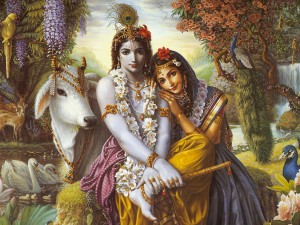 The final bhava is madhurya bhava, in which the bhakta regards God as her sweetheart and lover. It is the most intimate of all the bhavas and is sometimes regarded as the highest form of devotion.
The final bhava is madhurya bhava, in which the bhakta regards God as her sweetheart and lover. It is the most intimate of all the bhavas and is sometimes regarded as the highest form of devotion.- This bhava is mostly associated with the relationship between Radha and Krishna.
